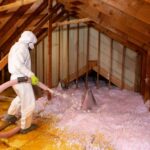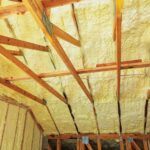Many homeowners find themselves asking, what causes roof blisters and how to fix these pesky problems? Roof blisters are a common issue, particularly troubling for those who want to maintain the integrity and appearance of their homes. This article will take you through the underlying causes, potential risks, and effective solutions for dealing with roof blisters. Read on to learn not only about handling these blisters but also how to prevent them and ensure your roof stays in great shape for years to come.
When you notice blisters on your roof, you might be wondering, how did they get there, and what should I do next? Often these blisters occur due to specific causes which involve the materials used and the installation process. With a bit of expert guidance, you can manage roof blisters without getting overwhelmed.

Understanding Roof Blisters
Before we delve into solutions, it’s crucial to understand what causes roof blisters. Blisters are often seen as air or moisture trapped between the layers of roofing material. Over time, this trapped air expands, pushing the outer layers up and forming the bubbles visible on your roof.
Common Causes of Roof Blisters
Several factors contribute to the formation of roof blisters. Understanding these can help homeowners prevent and address issues before they escalate.
Poor Installation Techniques
One of the leading causes of roof blisters is improper installation techniques. When roofing materials are not correctly adhered to the roof deck, air can become trapped, leading to blisters. Ensuring your roof is installed by a professional can prevent most blister-related issues.
Environmental Factors
The environment plays a vital role in blister formation. High temperatures can cause roofing materials to expand and contract, exacerbating any trapped air or moisture issues.
Moisture Entrapment
Moisture is a significant culprit in blister formation. If water seeps into the layers of a roof, it can create pockets of moisture that develop into blisters when exposed to heat.
Preventing Roof Blisters
To avoid dealing with roof blisters, focus on prevention. Regular maintenance and inspections can save you time and money in the long run.
Regular Roof Inspections
Consistently inspecting your roof ensures you catch potential issues early. Hiring a professional for routine inspections is a wise investment.
Proper Ventilation
A well-ventilated roof is less prone to blistering. Ventilation aids in controlling temperature and moisture levels, minimizing the risk of blisters.
Solutions for Repairing Roof Blisters
If your roof already has blisters, dont worry. There are effective ways to fix them before they cause further damage.
Professional Roof Repair
Hiring a professional to address blisters is often the best course of action. Experts can accurately assess the damage and determine the best repair methods.
DIY Repairs
For those preferring a hands-on approach, some DIY solutions can help manage smaller blisters. Ensure you have the proper tools and materials before attempting repairs yourself.
Potential Risks of Neglecting Roof Blisters
Ignoring roof blisters can lead to more severe roofing issues, potentially affecting the structural integrity of your home. Proactively managing these problems can prevent costly repairs down the road.
Water Damage
Blisters that burst can lead to leaks, causing water damage inside your home. Keeping an eye out for any signs of moisture indoors can alert you to roofing issues needing immediate attention.
Decreased Roof Lifespan
Blisters can cause your roof to age prematurely, reducing its lifespan. Regular maintenance and timely repairs can help avoid this outcome.
Choosing the Right Materials
Opting for quality materials during the installation or repair process is crucial to preventing future blisters. Consult with a roofing expert to select the best materials for your home’s specific needs and environment.
Long-term Maintenance Tips
So, you’ve fixed your roof blisters. How do you ensure they don’t return?
Regular Roof Maintenance
Once repairs are made, keep up with routine maintenance to ensure your roof remains in optimal condition.
Seasonal Checks
At the change of each season, look for signs of wear and tear on your roof. This proactive approach can catch potential issues early.
Conclusion
Understanding what causes roof blisters and how to fix them is essential for every homeowner. By addressing minor issues early and involving professionals when needed, you can avoid extensive damage and maintain the longevity of your roof. Embrace regular maintenance and inspections to keep your roof healthy for years to come.

FAQ Section
What are the first signs of roof blisters?
Initial signs include raised areas on the roof surface, visible during inspections. It’s vital to address these immediately to prevent further damage.
Can I repair roof blisters myself?
Minor blisters may be approached with DIY methods if you have the right tools. However, for extensive damage, consult a roofing professional.
How often should I check my roof for blisters?
Regular checks should be conducted twice a year, ideally in spring and fall, to spot any issues before they worsen.
This article contains affiliate links. We may earn a commission at no extra cost to you.







